Who Do You Think I Am?: My Life as a Cartoon Character
/Shortly after South by Southwest, I got a note from Rafi Santo from Global Kids calling my attention to the fact that my likeness had become a cartoon character, thanks to a new site called Bitstrips, which has used the festival to broaden its public visibility. Bitstrips is a site which supports the production and distribution of user-generated web comics. More recently, reader Jordon Himelfarb, a Canadian journalist wrote to tell me that the Henry Jenkins character had been deployed more than 95 times. I am one of a small selection of icons supposed to represent "famous figures", including Steve Jobs, Moby, and Doogie Howser. (The narrow range of options here suggests how deeply embedded this project has been in geek culture to date.) As someone who is interested in the ways images get appropriate and transformed over time, not to mention a notorious ego-maniac, I was very interested to see what uses were being made of this iconic representation of me. For what it's worth, I think I am funnier in real life than in the comics.
It is clear that the first few uses were from people who attended South by Southwest and were somewhat familiar with who I am and what kinds of things I am apt to say or do.
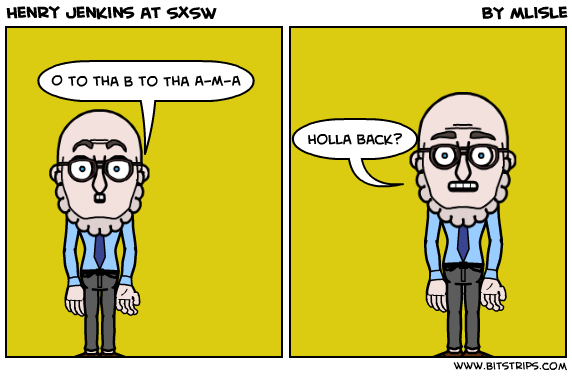
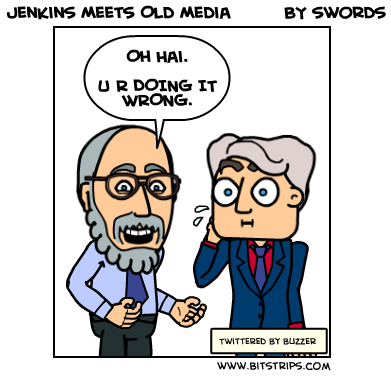
Quickly, though, the character begins to take on a life of its own. Certain aspects of the iconography (the bald head, the glasses, the beard) lend themselves to use to represent someone of a certain generation, as in this cartoon which depicts me as a father confronting his daughter's boyfriend for the first time.
Something in my image conjures up a certain kind of knowledge and expertise. Thus, the character can be cast as a psychiatrist or doctor.

Or as a talk show host talking about psychology.
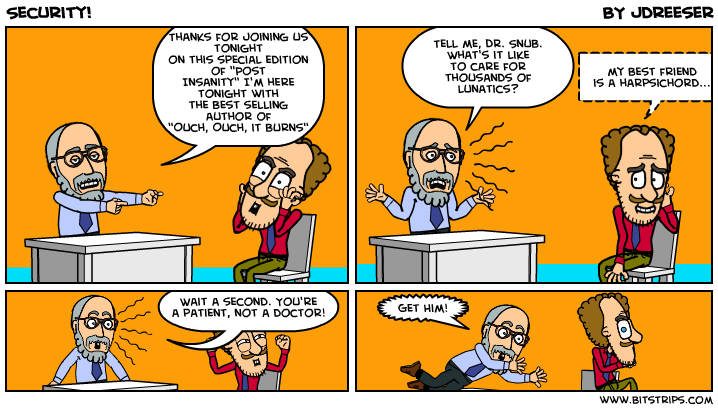
Or as a teacher.
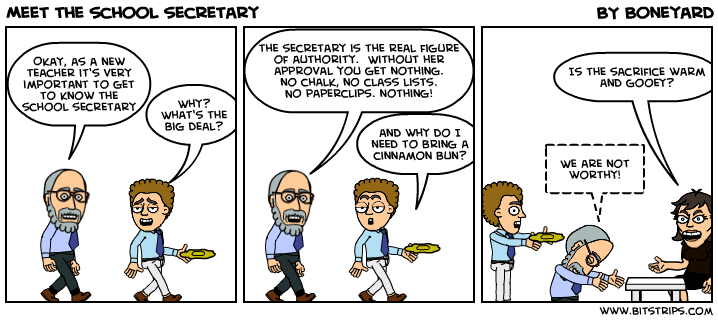
Or as a mad scientist:
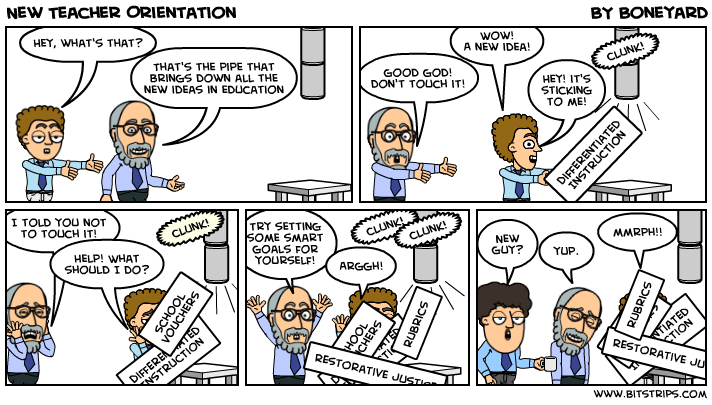
As a "high brow"
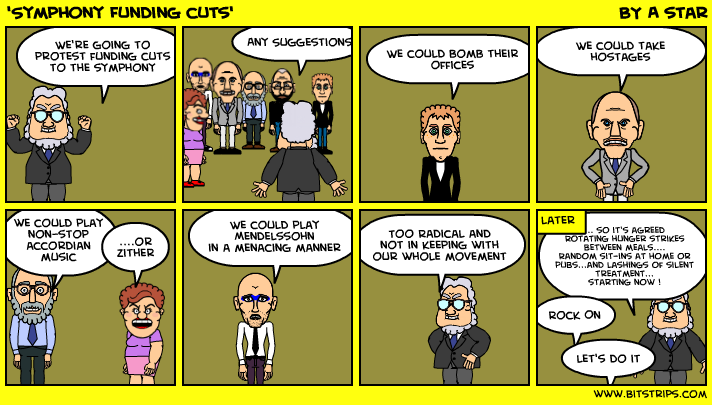
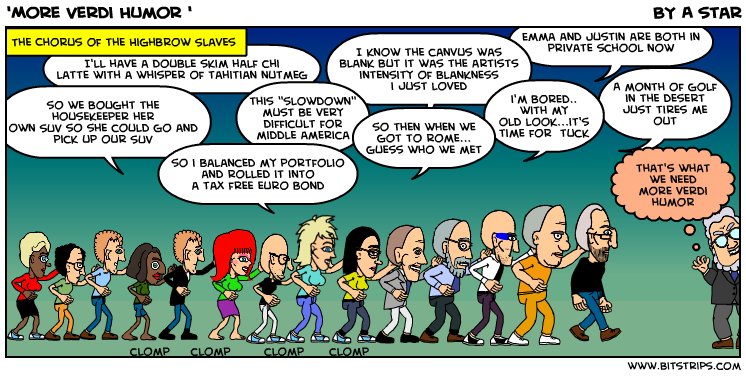
I'm even cast as the PC in a cartoon which plays with the Mac/PC template.
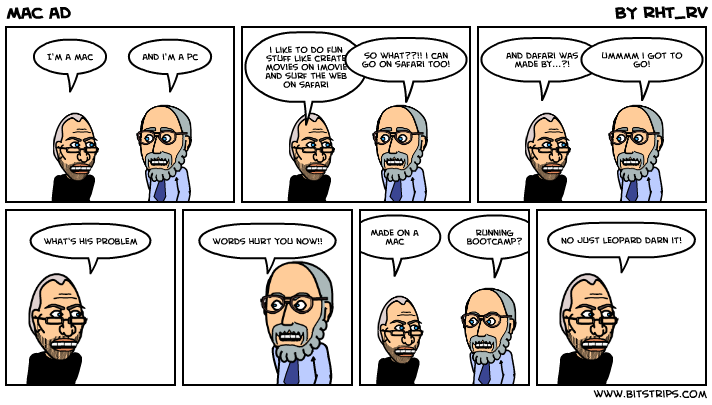
In short, the character got deployed many times not because people knew who I was in any specific sense but because my iconography constructs a particular kind of character which fits well within the classic formulas of the comic strip. This helps to explain both why my likeness becomes so spreadable and why it still carries a surprisingly narrow range of meanings, all things considered. I wonder what would have happened if the original "Henry Jenkins" character had shown me in my characteristic suspenders and not in a suit and tie.
This character, the expert, carries with it certain connotations and expectations. He is often a stuffed shirt or kill joy figure, that is, he deploys his authority to put others in their place and can thus in return become the object of ridicule. He is often portrayed as absent minded and befuddled, so that the comic situation can be used to suggest the limits of what can be comprehended. The familarity of this figure makes him a resource especially for professional humor including that involving medicine, computers, or education, themes clearly of interest to Bitstrips's first generation of users. It will be interesting to see what other ways this character gets deployed as the audience for Bitstrips diversifies. Already we can see examples of this figure getting used in other national contexts, though the stereotype seems to speak in languages that I don't personally understand. Even in the non-English language cartoons, though, I am most often depicted in an office setting suggesting that the character is seen as a professional and not as, say, working class.

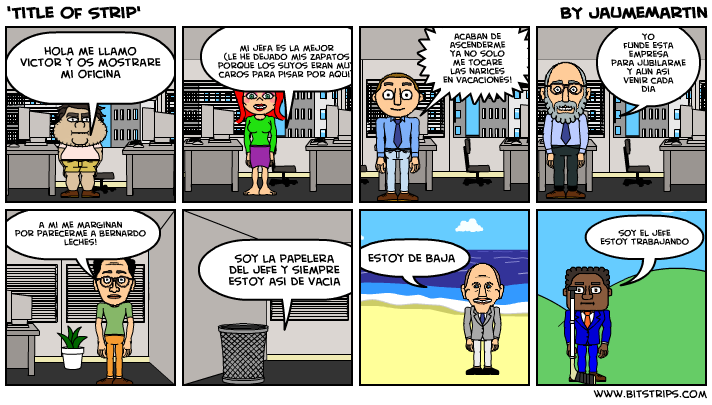
I encourage my readers to see what they can do with the tool and send me a link to the results. In the meantime, see you in the funny pages!

